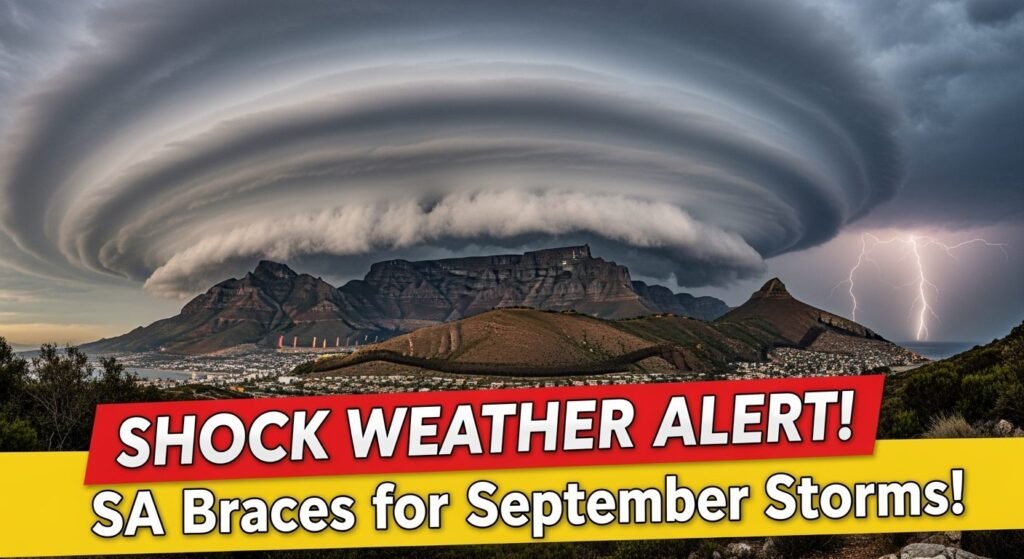South Africa Storm Warnings: As we approach September 2025, I want to bring your attention to some concerning weather developments across South Africa. The national meteorological department has issued comprehensive storm warnings for multiple regions, signaling what could be an unusually severe weather period. These warnings come after detailed analysis of atmospheric conditions that suggest potential flooding, high winds, and dangerous lightning activity. Have you prepared your emergency kit yet? The South Africa storm warnings indicate we should all take precautionary measures before these weather systems fully develop.

What Are The September Weather Alerts Covering?
The September weather alert 2025 for South Africa encompasses several provinces, with the coastal regions and eastern highlands facing the highest risk levels. Meteorologists have identified three major storm systems expected to sweep across the country in waves throughout the month. The first system is predicted to make landfall around September 5th, bringing heavy rainfall exceeding 100mm in 24 hours to parts of KwaZulu-Natal and the Eastern Cape. The second and third systems will follow approximately one week apart, with potentially increasing intensity. These South Africa storm warnings specifically highlight concerns about flash flooding in urban areas, mudslides in mountainous regions, and sustained winds that could damage infrastructure and power lines.
Why These Storm Warnings Are Particularly Serious
What makes these September weather alerts especially concerning is their timing and intensity. September typically marks the transition between seasons in South Africa, but the 2025 forecast shows abnormal patterns influenced by changing climate conditions. The meteorological department has noted that sea surface temperatures are significantly above average, fueling stronger storm systems with greater moisture content. Additionally, these storms are arriving earlier than the typical severe weather season, catching many communities in their preparation phase. The South Africa storm warnings have been classified at the second-highest alert level, something we’ve only seen twice in the past decade for September weather events. This classification reflects both the confidence in the forecast and the potential severity of impacts.
How To Prepare For The Forecasted Storms
With these South Africa storm warnings in place, preparation becomes essential. I recommend starting with securing your property – check roofing, clear gutters, and trim any dangerous tree branches. Create an emergency kit containing non-perishable food, water (at least 3 liters per person per day), medications, flashlights, batteries, and a portable radio. Develop a family communication plan, including meeting points and emergency contacts. Charge all electronic devices before storms hit and consider purchasing a power bank. If you live in flood-prone areas, prepare sandbags and identify the safest evacuation routes from your neighborhood. Remember to bring pets indoors and secure outdoor furniture that could become dangerous projectiles in high winds.
- Secure important documents in waterproof containers
- Stock up on essential supplies for at least 72 hours
- Identify your nearest emergency shelter location
- Keep vehicle fuel tanks at least half full throughout September
When To Take Action Based On These Alerts
The timing of your response to these September weather alerts is crucial. I advise completing all major preparations at least 48 hours before the first forecasted storm system arrives. The South African Weather Service will issue escalating alerts as the storms approach, with the most critical “red alerts” typically coming 24-36 hours before severe conditions begin. During this window, avoid all non-essential travel and complete any remaining emergency preparations. For those in the highest-risk zones identified in the South Africa storm warnings, consider voluntary evacuation to safer locations before mandatory orders might be issued. Throughout September, maintain vigilance by checking weather updates at least twice daily, as storm trajectories can shift rapidly, potentially placing new areas at risk with limited advance notice.
Real-World Impact of Previous September Storms
In September 2023, similar storm systems affected the Eastern Cape region with devastating consequences. The coastal town of Port St. Johns experienced flooding that displaced over 200 families when three rivers overflowed simultaneously. Local resident Themba Khumalo recounted: “We had just minutes to grab essentials before water entered our home. The community shelter became our home for nearly two weeks.” The economic impact exceeded R50 million in infrastructure damage alone, while agricultural losses were estimated at twice that amount. This historical precedent underscores why these South Africa storm warnings for September 2025 must be taken with the utmost seriousness.




